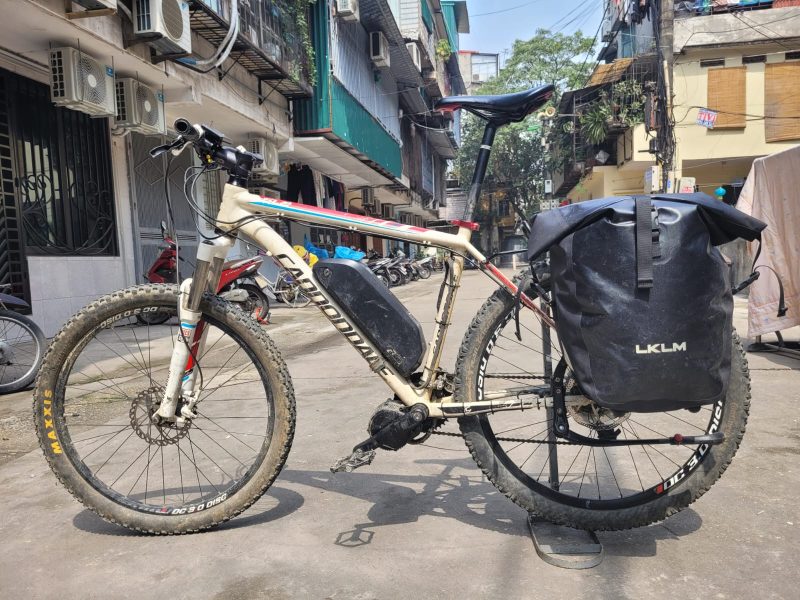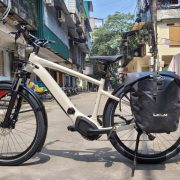Conquering Vietnam by Bike: 5 Epic Tips for Your Solo Cycling Adventure
Conquering Vietnam by Bike: 5 Tips for Solo touring cycle Vietnam Adventure :
Unveiling a tapestry of landscapes that includes emerald rice paddies, rugged mountains, and bustling coastal towns, Vietnam offers a breathtaking backdrop for a solo cycling tour. This adventure provides a unique opportunity to immerse yourself in the country’s beauty, culture, and self-discovery. However, proper preparation is essential to ensure a smooth and unforgettable journey. Here are five epic tips to guide you on your Vietnamese solo cycling adventure:
Tip 1: Craft Your Route – A Symphony of Scenery and Challenge
Vietnam travel caters to cyclists of all levels, with the Mekong Delta in the south offering relatively flat terrain perfect for beginners. As you venture north, the landscape becomes more challenging, culminating in the dramatic passes of north-central Vietnam. Here’s how to plan your route:
– Know Yourself: Assess your cycling experience and fitness level honestly. Don’t underestimate the strain of daily rides, especially in hot weather. Plan rest days and shorter distances in difficult sections.
– Embrace Diversity: Include coastal stretches, rice paddies, and mountain climbs in your route for a variety of landscapes and challenges.
– Research Local Routes: Utilize online resources and cycling communities like Crazy Guy on a Bike for detailed route maps, elevation profiles, and insights from experienced cyclists.
– Consider the Seasons: The dry season (November – April) is ideal for cycling in Vietnam, with cooler temperatures in the north and hot weather in the south. The rainy season (May – October) offers lush landscapes but presents challenges like slippery roads and potential flooding.

Tip 2: Gear Up for Success – A Reliable Steed and Essential Companions
Your bicycle is your trusted companion on this journey. Consider the following:
– The Right Bike: Opt for a touring bike with sturdy tires and a comfortable frame, tailored to the terrain you’ll encounter.
– Essential Gear: Pack tools, spare parts, a first aid kit, and appropriate clothing for varying weather conditions.
– Navigation Tools: Bring a GPS device
When preparing for a cycling trip in Vietnam, it is important to consider the weight you will be carrying and your personal preferences.
Essential Tools: Make sure to pack a basic repair kit with spare tubes, tire levers, a pump, and a multi-tool. Knowing how to perform basic repairs is essential for a smooth journey.
Safety First: Do not compromise on safety. Invest in a high-quality helmet and reflective gear for night riding to ensure your safety on the road.
Packing Light: Every gram matters when cycling long distances. Choose lightweight clothing that dries quickly and pack essentials such as rain gear, sunscreen, a headlamp, and a first-aid kit.
Navigation Essentials: While GPS navigation is helpful, it is wise to have a physical map as a backup. Download offline maps on your phone in case of limited internet access.
Tip 3: Embrace the Local Vibe – A Cultural Tapestry Awaits
Immersing yourself in Vietnamese culture is a crucial part of the experience. Here are some tips to help you embrace the local culture:
Learn Basic Phrases: Knowing a few key Vietnamese phrases like xin chào (hello), cảm ơn (thank you), and đắt quá (too expensive) can help you connect with locals and show your respect for their language.
Accommodation Options: Consider staying in homestays or family-run guesthouses to get a glimpse into local life and save money on accommodations.
Embrace Street Food: Vietnam is known for its delicious street food. Be adventurous and try local dishes like phở (noodle soup) or bánh mì (Vietnamese baguette), but remember to prioritize hygiene and start with well-cooked dishes.
Respect Local Customs: Be mindful of local customs and dress codes, especially when visiting religious sites. Remember to remove your shoes when entering pagodas or temples.

Tip 4: Prepare for the Unexpected – Navigating Vietnamese cycling Roads
Vietnamese roads present a unique set of challenges. Here are some tips to help you navigate them safely:
– Traffic Awareness: Motorbikes are the primary mode of transportation in Vietnam. Stay vigilant, keep a safe distance from other vehicles, and clearly signal your intentions.
– Road Conditions: Be prepared for potholes, uneven surfaces, and loose gravel, especially in rural areas.
– Night Riding: If possible, avoid riding at night. If you must ride after dark, use bright headlights and taillights to improve visibility.
– Learn from Locals: Watch how locals navigate the roads. They have valuable insights into traffic patterns and road conditions.
Tip 5: Embrace the Journey – You’re Never Alone
While solo travel can be fulfilling, there may be times when you long for companionship. Here are some ways to connect with others:
– Fellow Cyclists: Join online cycling communities or connect with other cyclists in Vietnam. You may discover new routes or even find a riding buddy for part of your journey.
Vietnamese
 Next Post
Next Post